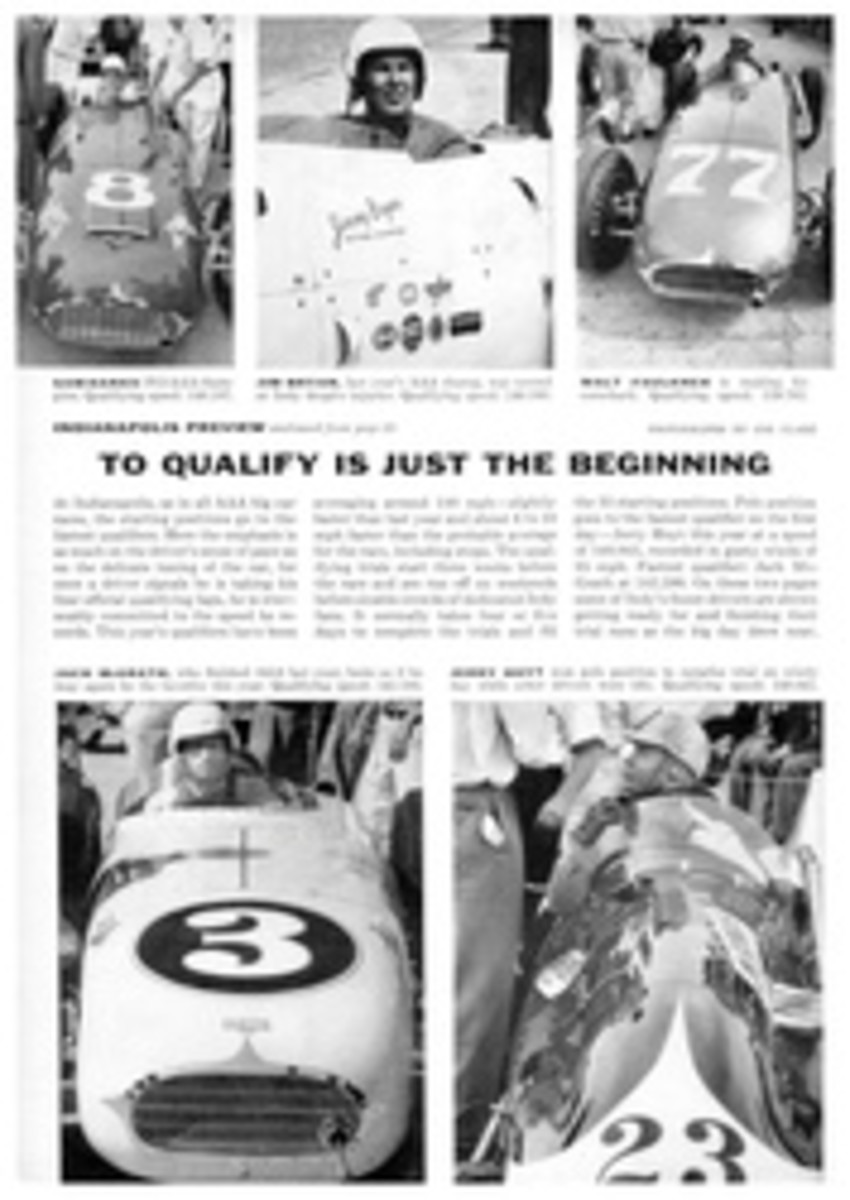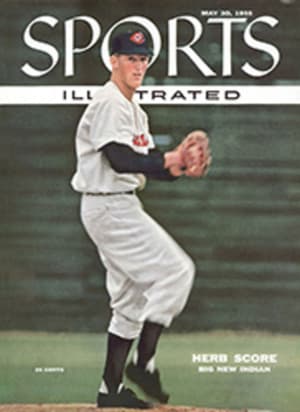
THE RODEOS GO TO COLLEGE
For half a century or more the new colleges of the old West—many of which were wrenching themselves into new educational patterns based on ranching and mining—have submissively copied the traditions of eastern universities. Schools which lusted wistfully for mandolin music and ivy before World War I, turned to high-pressure football afterward; the Yale-Harvard boat race, the Dartmouth ski carnival, and even the Oxford-Cambridge rugger match have their reflections west of the Mississippi. But the other day, the University of Wyoming's big new fieldhouse was the scene of a sport spectacle as peculiarly Western as a branding iron: Wyoming's annual regional intercollegiate rodeo with scores of Stetsoned college cowboys and tightly denimed college cowgirls from all over the Rocky Mountain states.
The big show—the first indoor rodeo, amateur or professional, in the history of the state—was something to impress the most weathered rancher and some 2,000 of Laramie's 15,000 citizens turned out to cheer its two night performances. A college rodeo clown tempted fate by baiting huge and belligerent Brahma bulls in the open arena and repeatedly saved his skin by leaping into a rubber-padded oil drum. The college cowgirls not only rode cutting horses in zigzag barrel races, but even engaged in a female substitute for calf roping—they leaped from the saddle with "piggin' strings" in their teeth to tie the legs of a small but extremely canny goat.
Their male teammates did battle with more than 80 head of genuinely big-time rodeo animals, haled for the occasion from top Stock Contractor E. A. (Buzzy) Hoover, and exhibited hair-raising hardihood and recklessness, if sometimes less than professional skills, as they came out of the chutes on Brahma bulls and bucking horses. And the show ended with a melee calculated to depopulate Wyoming's Greek-letter organizations—18 fraternity boys, divided into teams of three, simultaneously saddled six plunging Brahma cows in one narrow area of tanbark. Half a dozen of them rode the indignant monsters the length of the arena—an adventure in precariousness which left no doubts at all as to the durability of Wyoming youth.
"Git Western!" an announcer shouted over the loudspeaker system while the bruising fun went on. "C'mon, folks. Git Western! Git Western!"
He might have saved his breath. Western colleges are gitting more Western by the minute and Wyoming's rodeo (won by Colorado A & M, with Brigham Young University second, Wyoming third, Casper Junior College fourth and Montana State fifth) was a dramatization of that fact. Student rodeoing, which had its feeble beginnings in Texas and the Rockies before World War II, has spread like a grass fire in the years since; today even high schools have caught the fever, and there are rodeo clubs and intercollegiate teams in more than 50 colleges in the Southwest, the Rockies, in California, Oregon, Washington and even on the fringes of the Midwest.
Intercollegiate rodeo competition, however, is not intercollegiate sport in the usual sense. A good many college student bodies now offer rodeo teams some slight assistance—Wyoming not only turned over its fieldhouse last week but underwrote the expenses of the big show. But rodeoing is still owned and operated, stirrup, cantle and lariat, by the college cowboys and cowgirls themselves.
They represent college rodeo clubs rather than colleges. They are governed, not by college athletic rules, but by their own National Intercollegiate Rodeo Association, organized at Texas' Sul Ross State Teachers College and religiously patterned after the professional Rodeo Cowboys Association. They punish members for rodeo sins (the most horrible: failing to make a ride after entering) by blackballing the offender for six months and sometimes fining him as well. They set their own standards of scholastic eligibility (a C average) and compete in their own regions (Pacific, Southwest, Southeast and Rocky Mountain) rather than in conferences for the right to enter an annual national rodeo (tentatively planned for next month at McNeese State College, Lake Charles, La.).
ROCKY MOUNTAIN WALL STREET
Their governing officers are bothered not one whit by the fact that many a college cowboy and even some college cowgirls work their way through school by riding and roping in professional rodeos in the summer—the pros automatically become amateurs again when they rejoin college teams. An amateur rodeo is simply one in which the kitty has not been padded by a promoter. Under NIRA rules college competitors must pay entry fees of at least $10 for every event they enter, and the money must be offered in prizes; thus college cowboys not only battle for points and ornate silver belts but for hard cash as well.
The cowboys have no apologies at all. A great many of them are husky, rough-and-ready, ranch-bred agricultural students who regard the rodeo as Yale men once regarded Wall Street. A lot of them are top students—a majority of Brigham Young's team is on the college honor roll—but they tend to talk an "ain't been rode, ain't been throwed" brand of English and wear their big hats, boots and levis as campus garb. They are as dedicated to form as cricketers and since rodeos have always offered prize money they have no intention of changing the pattern, no matter what the AAU might have to say.
But at the same time they defy anyone to show them that they are not more truly amateurs than most college football players. "We win some money, sure," said Brigham Young's big, beaming All-Round Cowboy Dick Smith. "Maybe a fellow could get lucky and win a couple of hundred dollars. But this costs us all money just the same. If a boy wants to enter calf roping he's got to bring a roping horse to school and stable it and feed it. If we want stock to practice on—like a couple of bucking horses or some calves—we've got to buy it and feed it ourselves. Of course, down at BYU we've got Sinclair, the bucking barrel. It's an old oil drum with a saddle on it; we've got four innertubes nailed to the ceiling and four ropes between the tubes and the drum. Old Sinclair's never been rode yet when four men were really yanking on those ropes.
"I'll tell you something else. You can lose a lot of money too. I paid $55 in entry fees and I can lose it all. Tonight we're pulling out right after the show and we're going to drive all night and pull two horses another 500 miles to Utah State College and hit their rodeo tomorrow afternoon. I'll pay $40 there. I can lose that. We pay for gas. We pay for feed. Maybe we win once in a while and eat breaded veal on the way home but most likely we'll be eating hamburgers."
Brigham Young was not the only team which burned gasoline. Montana State's entries drove 600 miles, towing two roping horses in a trailer which the cowboys had built themselves, and they covered another 600 miles going home. Colorado A & M's drove to Laramie, competed on Friday night and set out immediately after the show on an 800-mile overnight haul, hoping to enter Iowa State's rodeo at Ames on Saturday afternoon and get back to class by Monday morning. All this was simply routine to the six-man cowboy teams which spend virtually every weekend night burning the long Western highways at 60 mph, with their horses packaged up on wheels and zooming along behind. But it was only a part of the routine. Every college rodeo club also tries to hold an annual show of its own and most of them spend months in fiendishly energetic preparation.
In Wyoming's case the burden of planning and promotion fell largely on the shoulders of Rodeo Club President Ted Schaffer, a big, dark-haired, quiet senior whose background and personality explain a great deal about the rise of college rodeoing. Most college cowboys are ranch-born and a surprising number are the sons of ex-professional rodeo buckaroos. Ted is no exception. His father, owner of the 7,000-acre Two Bar Seven dude ranch on the Wyoming-Colorado border, rode rodeo broncs for 20 years and raised his son to be a practical rancher, an athlete, a horseman—and a sportsman. "Nobody should rodeo just for the money," Schaffer Senior explains. "It isn't worth the bumps if you don't get some fun and satisfaction out of it."
WHAT THE EAST IS MISSING
Ted Schaffer and dozens of other Wyoming students seemed to be enjoying a lot of both. Their rodeo produced more spectacular falls than spectacular rides, but it also had its moments of high competence. Husky, blond Clark Wilde of BYU stayed on his bareback bronc for 10 long seconds and spurred with a will as he won the event. Colorado A & M's John Gee not only won the Brahma bull riding with his reckless ability to stick on a black-hided monster but bulldogged a steer in 4.4 seconds, which would have been highly acceptable time even in Madison Square Garden. Then Ted Schaffer (with his father acting as hazer) dove from his horse, caught and threw a later steer in a spectacular 3.5 seconds and won the event for Wyoming. The expensive show made little money, but it did not go in debt, and it moved with near-professional speed and precision.
"A little more of this," said one limping college cowboy, "and we'll be rodeoing coast to coast. Them schools in the East just do-o-o-n't know what they're missing."
PHOTO
JOERN GERDTS
ARMS OUTSTRETCHED, Kari Li Kuhr, Montana State College coed, signals that she has completed her attempt to catch and tie a small goat with a "piggin' string." Girls dressed in traditional rodeo costumes but did not compete in regular rodeo events.
PHOTO
JOERN GERDTS
COED TONI CHASE OF UNIVERSITY OF WYOMING IS ROPED AND TIED DURING A MOCK RODEO WHICH WAS HELD IN FRONT OF THE KAPPA KAPPA GAMMA SORORITY HOUSE ON WYOMING CAMPUS

